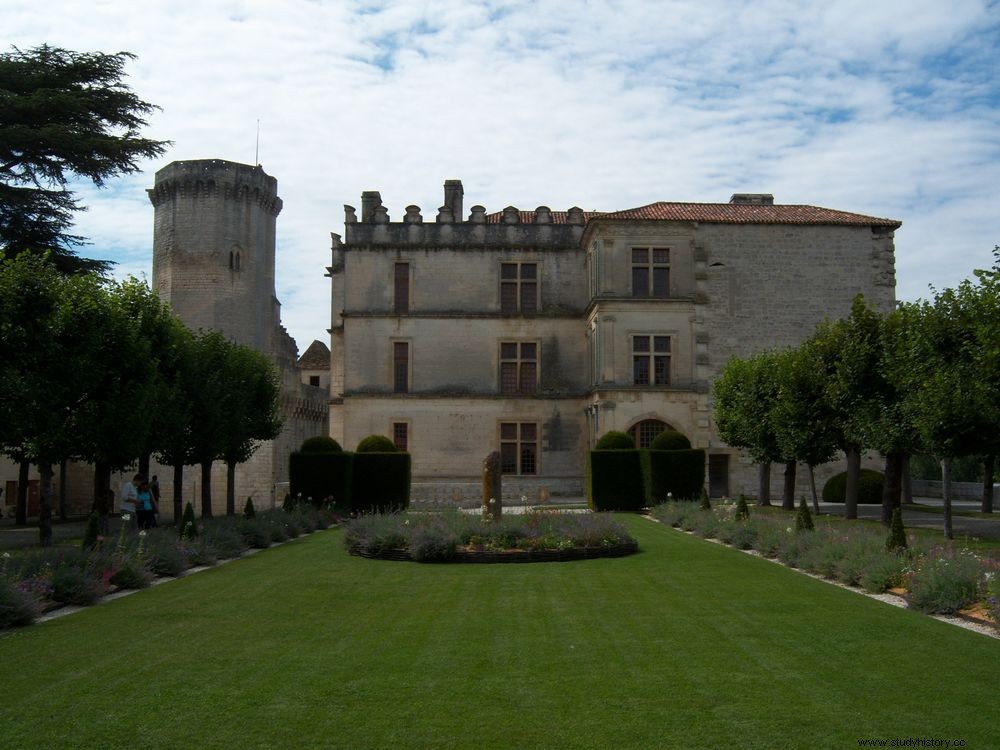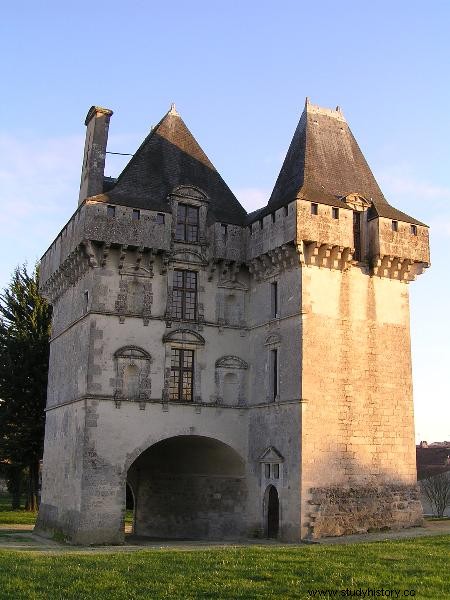Humanist, scholar and scholar, Jacquette de Montbron (1542 – 1598) is the only known female architect in France during the Renaissance.

From marriage to widowhood
Jacquette de Montbron was born in 1542 in Angoumois, a former French province corresponding to the center of the current department of Charente. In June 1558, aged 16, Jacquette married André de Bourdeille, viscount of Bourdeilles, lieutenant of King Henry III, governor and seneschal of Périgord, who was more than twice her age. He is the brother of the writer, columnist and soldier Pierre de Bourdeilles, dit Brantôme. It is through the writings of his last, and the Funeral Oration that he will write for his sister-in-law, that we know that Jacquette is a cultured, intelligent and learned woman who loves the arts and writes poetry:
“She spoke very well and very eloquently […]; and, his interview was very beautiful, and always full of beautiful speeches and words. She wrote and composed very beautiful poems and other beautiful things in prose, which are in her study among her books, the reading of which she was very curious; she usually devoted herself to it day and night. She spoke and understood Spanish and Italian well, and some Latin. »
Sole heiress of her older brother René de Montbron, who died the same year at the Battle of Gravelines, Jacquette brought her husband properties in Matha, Archiac and Sertonville in Angoumois as a dowry. The couple will have six children:Jeanne, Renée, Isabeau, Adrienne, Henri and Claude. In 1582, at the age of 63, André died following a fall from a horse that had occurred years earlier. Affected by the death of her husband, Jacquette orders a funeral “with great magnificence” . Widowed, she inherited all of the couple's properties and subsequently refused all suitors, including her brother-in-law.
Architect of the Renaissance palace of Bourdeilles
In 1587, Jacquette de Montbron entered the service of the queen-mother Catherine de Medici, a queen keen on art and a great patron, as a lady-in-waiting. She was one of her favourites, until she returned to her lands in 1588. The following year, she received a bequest of 4,000 crowns from the queen, a sum which she used to build a Renaissance castle near the old medieval fortress, property of her husband's family which she inherited in Bourdeilles. Jacquette's role in this construction is known by the Funeral Oration written by his brother-in-law Pierre:
"Of all the arts, she was very fond of geometry and architecture, being very expert and ingenious in them, as she has clearly shown in this superb building and beautiful house in Bourdeille, which she had built of her invention and the only way , which is very admirable. (…) She has always had stones built and moved in all her houses, being always assiduous in some fine action, as in her works, to which she was very industrious and laborious. »

Jacquette designs the plans for the palace – and other of her possessions – and oversees the work. Of this palace, only one wing will however be built during his lifetime due to financial problems; his descendants will complete his work. Patron, Jacquette also built the castle of Matha in Angoumois, drawing inspiration from Italian architecture and thereby contributing to the dissemination of culture. Influenced by the architect Sebastiano Serlio, she also knows how to free herself from codes and introduce bold innovations and new decorative elements into her homes. Artistic choices which, thereafter, will influence other buildings in Périgord.
Jacquette de Montbron is the only known woman in France to have played a role in architecture during the Renaissance. However, it is not unique in Europe:they are more numerous, particularly in Italy and Flanders. Margaret of Austria (or Margaret of Parma, 1522–1586), wife of the Duke of Parma and Piacenza Ottavio Farnese drew the plans for the Palazzo Farnese in Piacenza.
Art lover and humanist
After having frequented scholars and scholars at court, Jacquette de Montbron built a court around her on her land. She surrounds herself there in particular with her brother-in-law Brantôme, the philosopher and author Jean de Champagnac, and maintains a sustained correspondence with her frequentations at the court of the queen. She reads, writes, supports and disseminates arts and culture.
During the eighth religious war (1585 – 1598), Jacquette gave refuge to Catholic notables who came to ask for protection. Besieged in Mathas by the Prince of Condé, Henri I of Bourbon-Condé, one of the main leaders of the Protestant party, she refuses to deliver her guests. She sends him the message that she does not fear him, and that she will never betray "those poor people who had gone to cover and save under his faith" . Neither siege nor threats bend his courage.
Jacquette loses her daughter Renée, who dies before 1597, and this loss affects her deeply. According to her brother-in-law:"the melancholy she conceived of this honest girl carried her away within eighteen months" . Indeed, Jacquette de Montbron died in June 1598, following a long illness.
